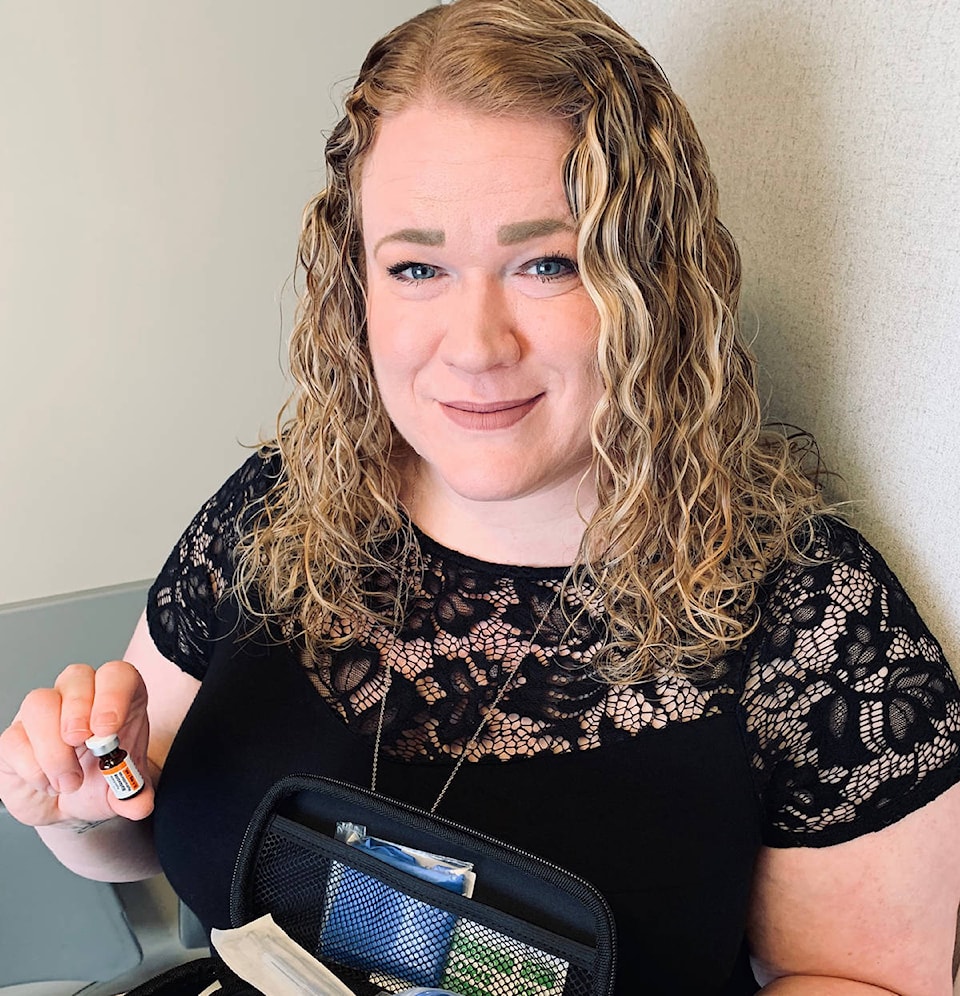Saving someone’s life when they’re blue in the face and possibly dying in front of you, is both scary and empowering.
Turning Point clinical manager Sarah Fleck administers naloxone kits and trains others to do the same thing. She has done the job at the street level, and since October, at the overdose prevention site, which operates on the Safe Harbour Society property.
“There’s a lot of emotions involved,” said Fleck, adding, “it’s giving someone the opportunity to live another day.”
Fleck is well aware of the initial panic that goes along with using the injectable kits that can save the life of someone who is overdosing. When people first start administering naloxone kits, there is hesitation, shaky hands and fear, said Fleck.
“But once they see the medication works, it’s a very rewarding experience to have somebody who is blue and potentially lifeless in front of you, become quickly resuscitated with the assistance of naloxone,” she said.
Front line workers not only depend on their skills, but on each other as a team.
READ MORE
Red Deer sees highest rate of fentanyl deaths
What probably helps the workers daily is the debriefing that takes place afterward. That’s when team members gather around, share the experience, pat each other’s backs and share anything that could’ve been done differently.
“That’s when they experience that they just assisted in saving somebody’s life,” said Fleck, noting that in the moment, they just think about the job in front of them.
The whole experience is humbling, empowering and rewarding, if not more, the registered nurse said.
Naloxone temporarily reverses the symptoms of fentanyl and other opioid poisonings and can keep people alive until paramedics arrive. It’s possible for a person to lapse into overdose again once the naloxone wears off, so more of the remedy may be required.
Kits contain instructions on how and when to administer the drug, two vials of naloxone, syringes, alcohol swab, latex gloves and a one-way rescue breathing mask. Turning Point provides training on mouth-to-mouth breathing and how to administer naloxone.
From the moment someone seems blue in the face and needs help to reverse the symptoms of fentanyl, depends on a person’s tolerance level and the potency of the drug – but takes anywhere bewtween two and 10 minutes, on average.
Fleck said the friends and family who are present for people overdosing are the true unsung heroes.
“On the streets, or before the overdose prevention site opened, we have clients who have saved other clients’ lives over a 100 times, and they will describe seeing all of their friends and closest people in their lives dead in front of them, and having to resuscitate them and they talk about the trauma,” said Fleck.
“So on a daily basis, we’re reversing people’s overdose, but I think it’s also important just to remember clients have been doing this longer than we have, and they are the true experts in how to save each other’s lives as well.”
mamta.lulla@reddeeradvocate.com
Like us on Facebook and follow us on Twitter
